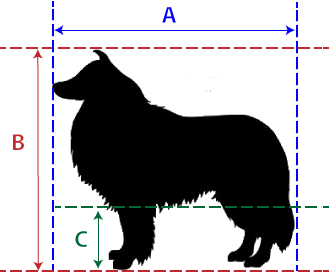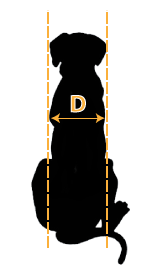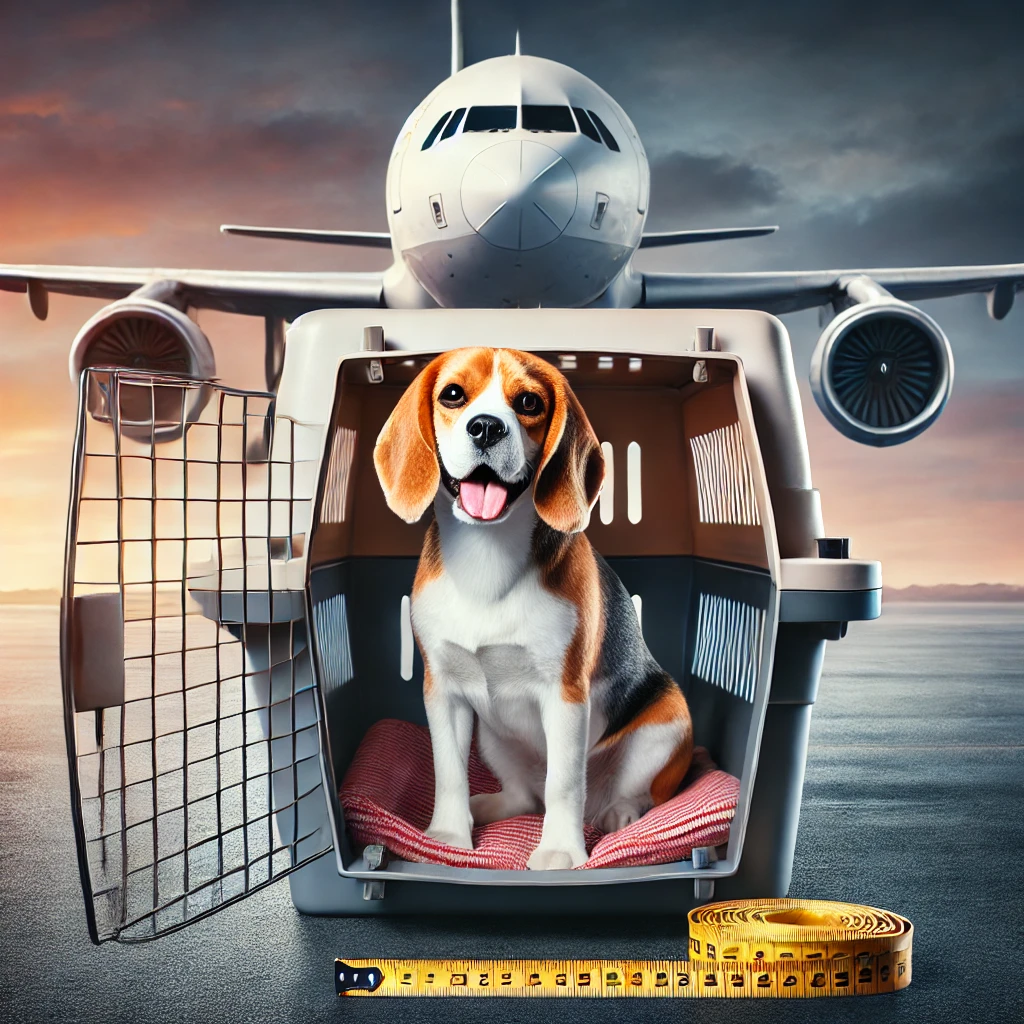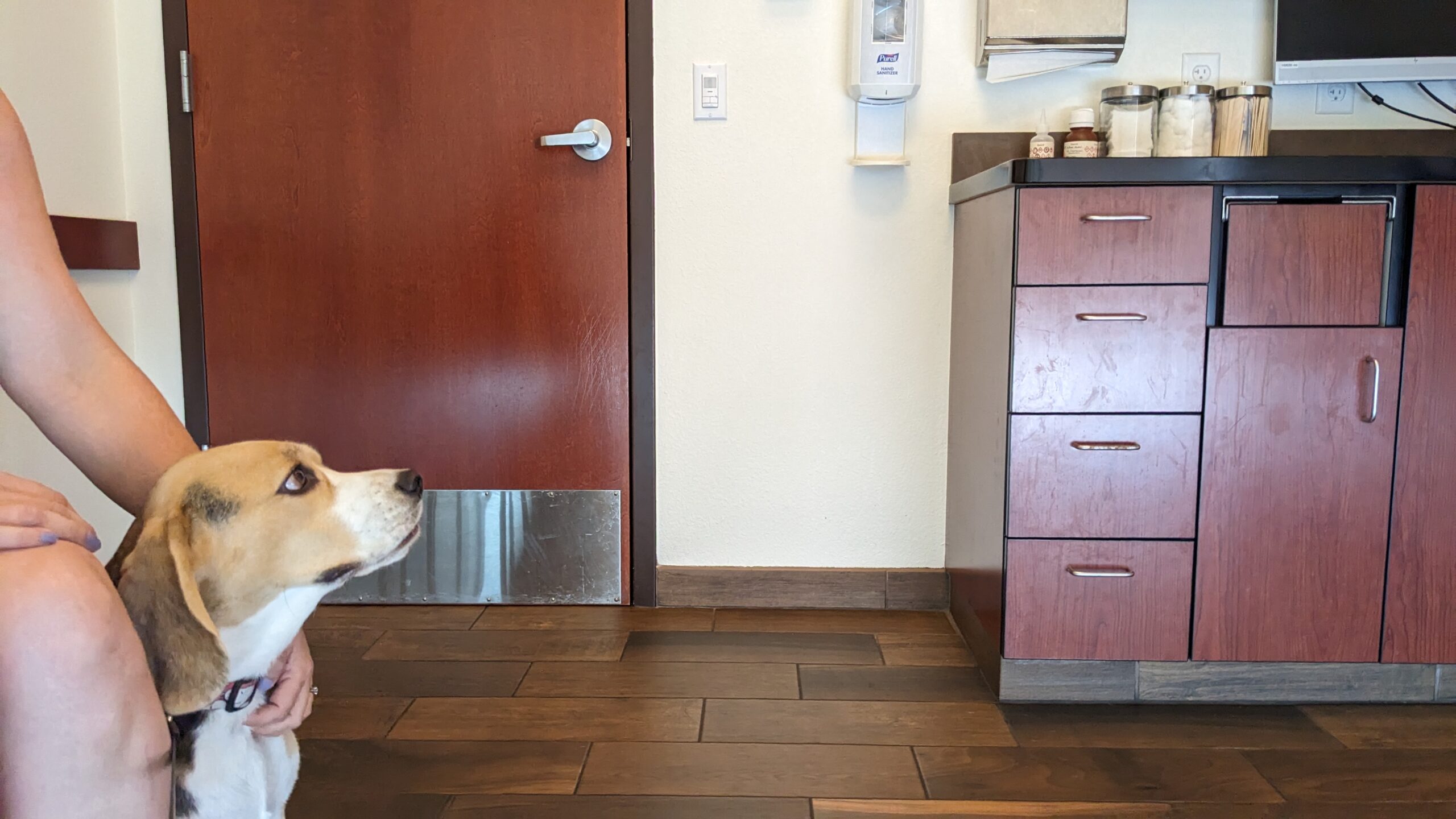Choosing the right-sized travel crate for your dog is crucial to ensure their comfort and safety, especially for long-haul intercontinental flights. Based on our experience traveling with our beagle, Sniffy, we’ve found that it’s often best to opt for a crate with a little extra room, particularly on major international journeys. A crate that allows your dog to stand, turn around, sit erect, and lie down naturally will ensure they stay comfortable throughout the flight. Although this guide provides general recommendations, always confirm specific requirements with your airline.


When preparing to travel with Sniffy, we used these measurements to ensure the crate was spacious enough for long flights. If you’re traveling with a dog, follow these steps to gather the necessary measurements:
1. Length of Your Dog (A)
While your dog is standing, run a tape measure from the tip of their nose to the base of their rump, without including the tail (see measurement A in Fig. 1). This will give you the necessary length to ensure your dog can comfortably stretch out.
2. Height of Your Dog (B) and Front Leg Length (C)
To ensure your dog can stand up comfortably, measure from the bottom of their paw to the top of their head (B), including the ears. This is essential, especially for breeds like beagles, where the ears may add a little extra height. Airline personnel often check that dogs can stand upright without having to duck their heads.
Next, measure the length of your dog’s front legs (C) from the paw to their chest. This helps calculate how much room your dog will need to lie down comfortably inside the crate.
3. Width of Your Dog (D)
Measure your dog’s width across the shoulders (D). This measurement ensures they have enough room to turn around comfortably in the crate. This is particularly important for breeds like Sniffy, who appreciate a bit of extra space to stretch.
4. Weight of Your Dog
Knowing your dog’s weight is critical, as each crate has a maximum weight limit. Sniffy weighs around 20 kg, so we ensured the crate could safely support his weight. For larger or smaller breeds, always check the weight restrictions of the crate.
With these measurements, you can now determine the most appropriate crate size for your dog’s travel needs, as we did for Sniffy.
Choosing the Most Appropriate Crate for Long Flights
For intercontinental flights, we opted for a slightly larger crate for Sniffy to provide him with extra space during long flights. This allowed him to stretch out and feel more comfortable on journeys that lasted several hours. When calculating the crate size, use the following formula:
Crate Length: Add your dog’s length (A) plus half the length of their front legs (C).
Crate Width: Double the width measurement (D) and add 2 cm.
Crate Height: Add 2 cm to the height measurement (B).
For example, for Sniffy, who is 45 cm long, has a leg length of 18 cm, is 17 cm wide at the shoulders, and is 45 cm tall, we calculated:
- Crate Length: 45 cm (A) + 9 cm (½ of 18 cm) = 54 cm long.
- Crate Width: 17 cm (D) x 2 + 2 cm = 36 cm wide.
- Crate Height: 45 cm (B) + 2 cm = 47 cm high.
This extra room ensured Sniffy had a more comfortable experience on his longer flights, which is something we recommend for any major international travel with dogs.
References
- IATA Live Animals Regulations
- Pet’s Pantry Crate Sizing Guide
- Qantas – Travelling with Pets
- JetPets – Pet Travel & Transport




